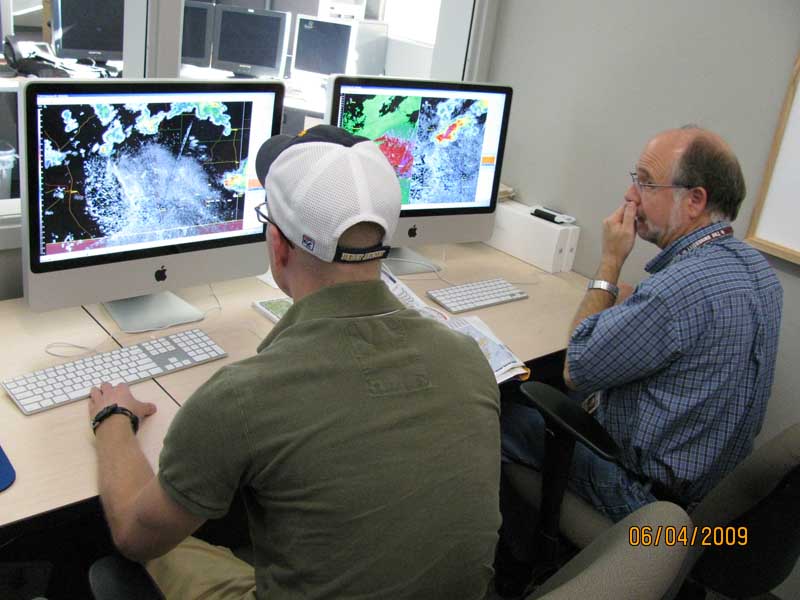The Experimental Forecasting Program (EFP) branch of the NOAA Hazardous Weather Testbed conducted its annual 2009 Spring Experiment, organized by the SPC and the National Severe Storms Laboratory, from May 4 through June 5. Approximately 40 visiting scientists, model developers, operational forecasters, faculty members and graduate students from the U.S., Canada, and the United Kingdom collaborated with SPC and NSSL forecasters and scientists during the five-week program.
As in recent years, the primary focus was the utilization of convection-allowing model forecasts as guidance for the prediction of severe convective weather. EFP participants explored a variety of model output for severe storm prediction and aviation impacts. The model guidance was generated by the University of Oklahoma’s Center for Analysis and Prediction of Storms (OU-CAPS), the National Centers for Environmental Prediction Environmental Modeling Center (NCEP-EMC), the National Center for Atmospheric Research (NCAR), the National Severe Storms Laboratory (NSSL), the Air Force Weather Agency (AFWA), and the Earth System Research Laboratory Global System Division (ESRL/GSD).
EFP Participants looked at products derived from both ensembles and deterministic forecasts. This revealed sensitivities in the model output to mesoscale and larger scale initial and lateral boundary conditions, radar data assimilation, model physics, model dynamic cores, model resolution, and updates to initial conditions (e.g., 1200 vs. 0000 UTC initialization). Some of these sensitivities were assessed subjectively, but we also utilized the Developmental Testbed Center’s Model Evaluation Tools for real-time and post-experiment analysis.
The combination of the unique framework of the HWT and synergy with VORTEX II and the new GOES-R Proving Ground made the 2009 Spring Experiment an exciting and scientifically stimulating event.


